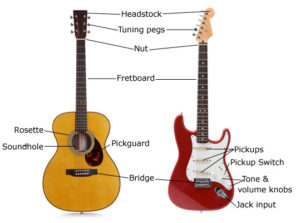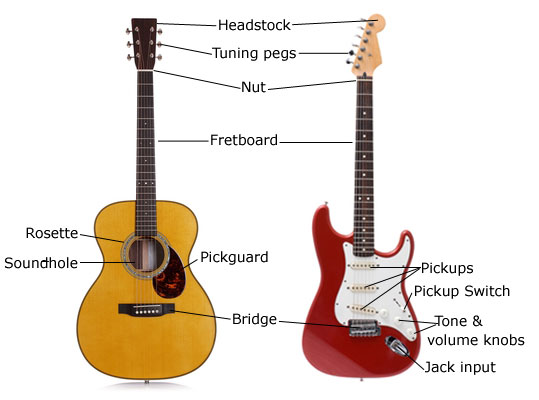If you’re new to the world of guitar, you may hear some terms and phrases bandied about that sound like people talking in a foreign language. In many cases, these are simply ways to describe how the mechanical parts of the instrument are calibrated for the individual player. Once you become familiar with a few of these concepts, you’ll be able to start conversing in the language of guitar.

String Gauge
String Guage is how thick or thin the strings are. This is measured in millimeters and is solely a matter of preference to the player. Gauges are often referred to as heavy (thickest), medium and light (thinnest).
Action
Action is the distance between the fretboard and the strings. Lowering the action means bringing the strings closer to the frets, making the distance shorter, and the effort easier, to press the strings down when you’re playing chords. Raising the action is bringing the strings further away from the fretboard. This is usually done to reduce fret buzz (see below).
Intonation
Intonation is how well the notes of the guitar maintain correct pitch as you play at different locations on the fretboard. If the intonation is off, a chord played at the 2nd fret could be in tune but a chord played at the 10th fret may sound out of tune.
Fret Buzz
Fret buzz is a rattling, buzzing sound that happens when a vibrating string hits against one or more frets. A certain amount of fret buzz is normal. When it becomes excessive, irritating or prevents notes from playing clearly, it’s time for some adjustment.
Setup
Setup is the overall process of adjusting a guitar for an individual player. You can take a guitar for a general setup or provide specific requirements for your taste or needs. Maybe you like really low action and light gauge strings or higher action and heavy gauge strings (sicko!). Or maybe you’re getting some fret buzz on the D string at the 4th fret that you want to get rid of. Let your guitar tech know your concerns and they’ll address them during the setup process.
If you’ve made it this far, hopefully some of those elusive conversations and blog posts will start to make a little more sense. You’ll be well on your way to speaking the language of the guitar!

